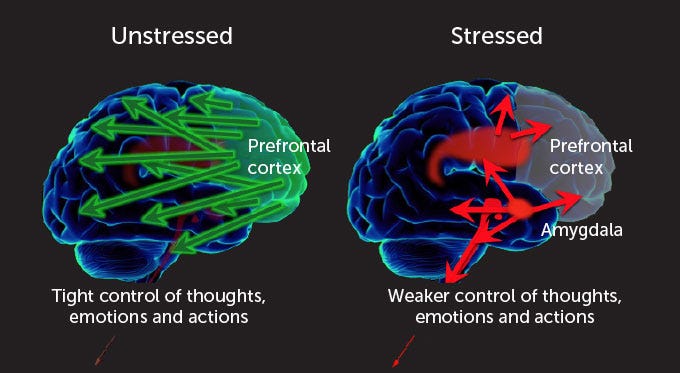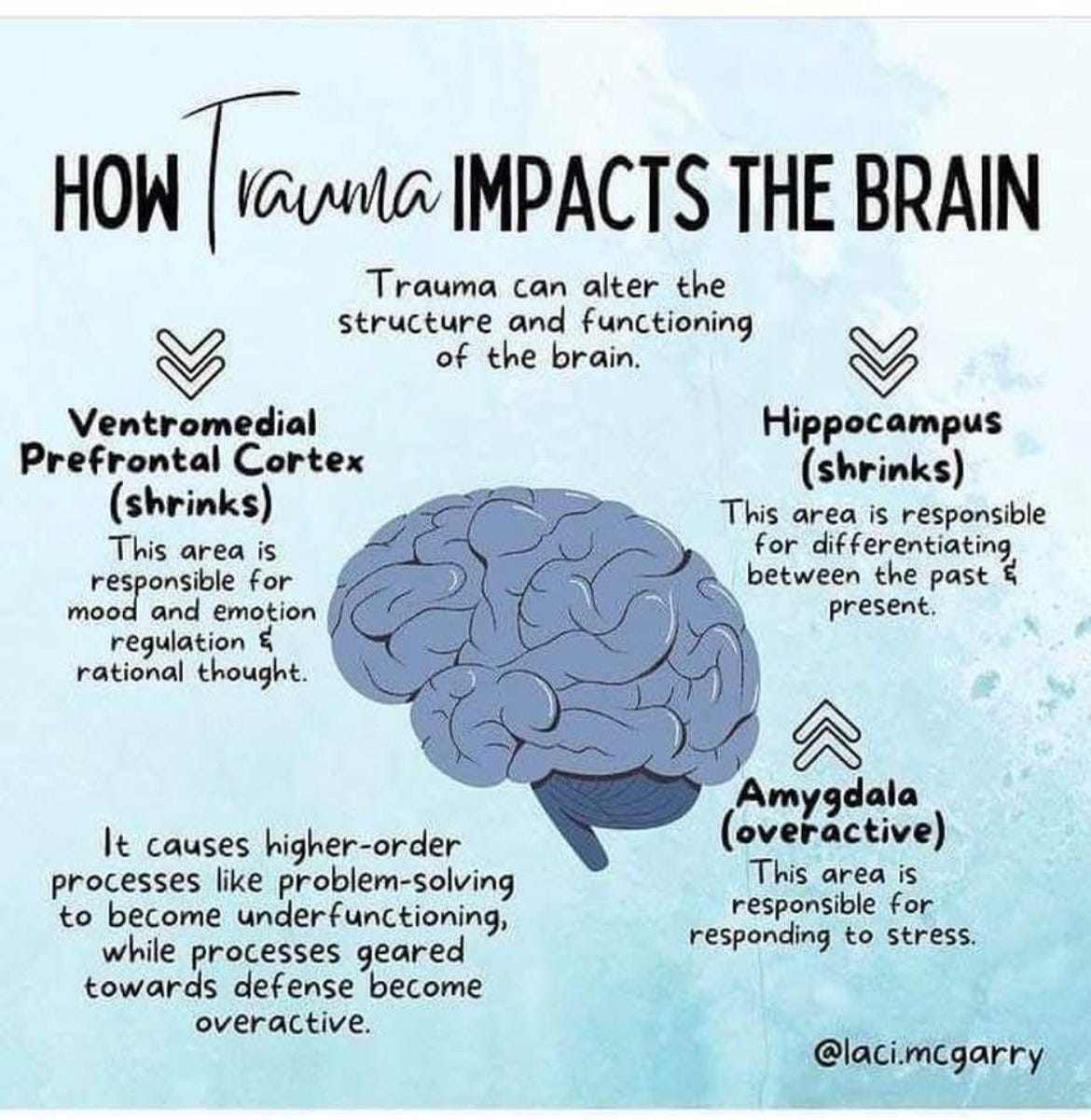Ever reacted impulsively and wondered why? Dive into the fascinating world of the “amygdala hijack” with our expert guest, J. Gulinello, MS, CNSc, FNTP. Discover how this primal brain response influences our emotions, especially in high-stress or dogmatic environments.
In this episode, we explore:
The science behind the amygdala’s override of rational thought.
How nutrition plays a pivotal role in emotional regulation and preventing these hijacks.
The hidden impacts of historical events like the Flexner Report and the rise of Crisco on our health and dietary guidelines.
Strategies to foster critical thinking and maintain objectivity in a world filled with consensus narratives.
Join us for an eye-opening discussion that blends neuroscience, nutrition, and history, offering insights to better manage our reactions and health. Don’t miss this deep dive into understanding how our brains and diets intertwine!
Understanding the Amygdala Hijack and Its Implications on Nutrition and Emotional Regulation
Guest: J Gulinello MS, CNSc, FNTP
Introduction: In this episode, we dive deep into the concept of the “amygdala hijack,” a term that describes how our brains can override rational thinking in the face of perceived threats. We’ll explore how this phenomenon impacts our emotional responses, decision-making, and behavior—especially within dogmatic communities. Our guest, J Gulinello, shares insights into how diet and nutrition can support better emotional regulation and help prevent these hijacks. We also touch on the role of nutrition in modern health and the influence of historical factors like the Flexner Report and Crisco on the medical and food industries.
The Amygdala Hijack Explained
Definition: The amygdala hijack, a concept introduced by Daniel Goleman in his book Emotional Intelligence, refers to an immediate, overwhelming emotional response to a perceived threat, where the brain’s rational thinking is bypassed by the amygdala, leading to a fight-or-flight reaction.
Impact on Behavior: When triggered, this response can lead to actions driven by emotion rather than logic, often resulting in regretful decisions or unnecessary conflicts.
Research Insights: Studies show that once the amygdala hijack occurs, it takes time for the brain to return to normal as stress hormones like adrenaline need to dissipate. Mindfulness and cognitive-behavioral strategies can help manage these responses.
Amygdala Hijack in Dogmatic Communities
Fear-Based Teachings: In dogmatic environments, fear is often used to enforce compliance, leading to a constant state of alertness. This can perpetuate the cycle of amygdala hijack, reducing the capacity for rational thought.
Groupthink: Heightened emotional states can foster groupthink, where individuals suppress dissenting opinions to maintain harmony, further entrenching dogmatic beliefs.
Manipulation and Control: Leaders may exploit the amygdala hijack to maintain control by presenting continuous threats, keeping members in a heightened state of emotional arousal, making them more susceptible to manipulation.
Emotional Hijacking’s connection to Complex PTSD.
I’m currently reading Complex PTSD: From Surviving to Thriving by Pete Walker, which ties in closely with Daniel Goleman’s work on Emotional Intelligence, a topic we’re diving into today. Walker’s exploration of emotional flashbacks sheds light on what Goleman refers to as “amygdala hijacking”—an intense, overwhelming emotional regression that pulls us back to the states of fear, shame, and depression we experienced in childhood.
When caught in an emotional flashback, you might feel small, fragile, and utterly helpless. Life can suddenly seem too difficult, and even the idea of being seen by others feels excruciatingly vulnerable. Your energy feels depleted, like your battery is completely drained. In the most severe flashbacks, it can feel as if an impending apocalypse is looming.
These flashbacks aren’t just reliving bad memories; they are reliving the worst emotional experiences of your childhood. Everything becomes overwhelming and confusing, especially because, unlike typical flashbacks, there are rarely visual components to CPTSD episodes. As Goleman explains, this is because amygdala hijackings are intense reactions in the emotional memory part of the brain that override rational thinking. These reactions can become so ingrained that even minor triggers can send someone spiraling into a panicky state, a reaction known as the “4F” response (Fight, Flight, Freeze, or Fawn).
How do I know if I’m experiencing an Amygdala Hijack or Emotional flashback?
Recognizing when you’re in an emotional flashback, especially when you feel small, helpless, or overwhelmed, can be challenging. However, certain signs can indicate that you’re in this state:
Overwhelming Fear or Panic:
You might suddenly feel intense fear or anxiety without a clear cause in the present moment, as if you’re in imminent danger.
Feeling Small or Helpless:
You may feel as though you’ve reverted to a childlike state, experiencing a sense of powerlessness or vulnerability.
Negative Self-Talk:
Your inner critic might become louder, filling your mind with harsh, self-critical thoughts, such as “I’m not good enough” or “I can’t handle this.”
Sense of Doom or Despair:
A pervasive feeling of hopelessness or believing that the situation will never improve can dominate your thoughts.
Intense Shame or Guilt:
You might experience a sudden wave of shame, feeling as though you’re fundamentally flawed or bad.
Emotional Numbness or Dissociation:
You may feel disconnected from your emotions, body, or surroundings, as if you’re watching yourself from the outside.
Physical Symptoms:
You might notice physical reactions like a racing heart, shallow breathing, sweating, or feeling frozen in place.
Urgency to Escape or Hide:
A strong desire to retreat, isolate yourself, or avoid others can arise, driven by the need to feel safe.
Heightened Sensitivity to Criticism:
You may become overly sensitive to perceived criticism or rejection, reacting strongly to things that wouldn’t normally bother you.
Feeling Overwhelmed by Simple Tasks:
Even routine tasks can feel insurmountable, leading to procrastination or avoidance.
Flashbacks or Intrusive Memories:
Vivid memories or images from past traumatic experiences may surface, blurring the lines between past and present.
Excessive People-Pleasing or Compliance:
You might find yourself excessively trying to please others or agreeing to things you normally wouldn’t, out of fear of conflict or abandonment.
Avoidance of Eye Contact or Social Interaction:
Avoiding eye contact, withdrawing from social situations, or feeling a strong need to hide can be signs of being in an emotional flashback.
Being aware of these signs can help you identify when you’re in an emotional flashback and take steps to manage it, such as grounding yourself, reaching out for support, or practicing self-compassion.
13 steps for managing emotional flashbacks
Here are the 13 tips that Peter Walker provides in Chapter 8, “Managing Emotional Flashbacks,” from his book Complex PTSD: From Surviving to Thriving:
Say to yourself: “I am having a flashback.”
Acknowledge that you are in a flashback and recognize that these intense feelings come from the past.
Remind yourself: “I feel afraid, but I am not in danger.”
Assure yourself that although the fear is real, it’s not about something happening now.
Own your right/need to have boundaries.
Recognize that it’s okay to set boundaries with others, even if it feels uncomfortable.
Deconstruct eternity thinking.
Understand that the flashback will pass, and the feelings are temporary, not eternal.
Remind yourself: “I am in the body of an adult and I have choices.”
Reaffirm your ability to make choices and take actions as an adult, unlike when you were a child.
Ease back into your body.
Ground yourself physically by engaging in sensory activities like deep breathing, walking, or self-hugging.
Seek support.
Reach out to trusted friends, a therapist, or a support group who can provide understanding and help you navigate the flashback.
Remember that you have time to recover.
Give yourself the time and space to recover; don’t rush the process.
Practice self-compassion.
Treat yourself with kindness and understanding, recognizing the pain and fear from the flashback.
Challenge your inner critic.
Actively dispute the negative thoughts and beliefs that arise from your inner critic during a flashback.
Allow yourself to grieve.
Permit yourself to feel and process the sadness and loss connected to the original trauma.
Employ grounding techniques.
Use techniques like focusing on the present moment, engaging with your senses, or repeating grounding phrases to stay anchored.
Cultivate safe relationships.
Develop and nurture relationships that are supportive, trustworthy, and understanding of your experiences.
These tips are designed to help individuals recognize and manage the intense emotional responses triggered by past traumas, allowing them to regain control and navigate through the flashbacks more effectively.
Nutrition’s Role in Emotional Regulation
Nutrition and the Limbic System: J Gulinello explains how our diet impacts the function of the limbic system, particularly the amygdala. Certain foods and nutrients can help support emotional regulation, reducing the likelihood of an amygdala hijack.
Blood Sugar Levels and the Limbic System: Exploring the Connection
Emerging research highlights a significant connection between blood sugar levels and the functioning of the limbic system, which is crucial for emotional regulation. The limbic system, including the hippocampus and amygdala, plays a key role in managing our emotional responses and memory processing. Recent studies suggest that fluctuations in blood sugar levels can directly impact these brain regions, influencing mood and emotional stability.
Dietary Impacts on Blood Sugar Levels
Dietary habits significantly affect blood sugar levels, causing swings between high and low levels. For instance, consumption of high-glycemic index foods can lead to rapid spikes in blood sugar, followed by swift declines, potentially resulting in feelings of irritability, fatigue, and mood swings. On the other hand, low-glycemic index foods promote more stable blood sugar levels, supporting better mood stability and emotional regulation.
The Sensitivity of the Hippocampus to Blood Sugar Fluctuations
The hippocampus, a critical part of the limbic system responsible for memory formation and emotional regulation, is particularly sensitive to changes in blood sugar levels. Research published in the Journal of Diabetes in 2018 found that fluctuations in blood sugar can affect the function of neurons in the amygdala, a key component of the limbic system involved in processing emotions such as fear and pleasure. The study demonstrated that significant swings in blood glucose levels could alter the activity of amygdala neurons, potentially leading to emotional instability and impaired memory function.
Implications for Emotional Health
Understanding the impact of blood sugar levels on the limbic system underscores the importance of maintaining stable glucose levels for emotional well-being. Individuals experiencing frequent emotional swings may benefit from dietary adjustments aimed at stabilizing blood sugar levels. This could include incorporating more whole grains, lean proteins, and fiber-rich foods into their diets while reducing the intake of sugary snacks and refined carbohydrates.
By recognizing the interplay between diet, blood sugar levels, and brain function, we can better appreciate how dietary choices influence emotional health and take proactive steps to support a more balanced and stable emotional state.
Foods for Emotional Balance: Nutrients like branched-chain amino acids and omega-3 fatty acids play a crucial role in supporting brain health and mitigating stress responses.
Food as a Hormone: The idea that food components act like hormones, affecting cell signaling and gene transcription, shifts our understanding of nutrition. J elaborates on how this perspective impacts health and disease management.
I mention my good friend and dietitian Nicole Fennel of Chewsfoodwisely! Check out her article on Optimal Brain Health.
The Art and Science of Low-Carb Performance by Dr. Paul Jaminet and Dr. Shou-Ching Jaminet primarily focuses on how a low-carb diet can improve athletic performance and general health. The research and recommendations in the book are based on a variety of studies, many of which involve male participants.
While the book does provide some general information applicable to both sexes, it is worth noting that the specific research and data on how low-carb diets impact female athletes and women in general are less emphasized. The principles outlined are generally applicable, but individual responses can vary, and more specific research on females might be required for a comprehensive understanding. If you’re looking for information tailored specifically to women, you might need to look for studies or resources that focus on female physiology and metabolism in the context of low-carb diets.
Blood Sugar, Metabolism, and Women’s Health: Understanding the Complex Interactions
Gender-Specific Research Gaps
It’s crucial to note that much of the research on low-carb diets and intermittent fasting has been conducted primarily on male participants. This distinction is significant because female physiology is different from male physiology when it comes to dietary responses. As of 2024, many nutrition and fitness studies still underrepresent women, despite growing awareness of this issue.
For example, early cardiovascular health studies were predominantly male-focused, leading to differences in the recognition and treatment of heart disease between men and women. Women often experience different symptoms during a heart attack, and treatments may vary accordingly. Similarly, women’s metabolic responses to dietary changes differ due to hormonal variations, affecting how they lose weight and manage blood sugar levels.
Potential Issues with Intermittent Fasting and Low-Carb Diets for Women
Adding intermittent fasting on top of exercise can sometimes be harmful to both performance and health, especially for women. Many women are unknowingly under-eating due to a fear of eating too much, past experiences with chronic dieting, or a lack of understanding of their energy needs. A recent review of 42 studies published between 2013 and 2020 found that women are more likely to be deficient in essential nutrients, with between 30% and 70% of women in the studies being energy deficient. Low energy availability is common among female athletes, with a 2019 survey published in the British Journal of Sports Medicine estimating that more than 47% of female athletes may not consume enough calories to meet their body’s energy needs.
Intermittent fasting and keto diets can disrupt the production of kisspeptin, a neuropeptide essential for reproductive hormone regulation. Women are particularly sensitive to kisspeptin, which affects endocrine and reproductive function. This disruption can lead to endocrine dysfunction, increased abdominal fat, and a higher risk of depression, which are counterproductive to health and fitness goals. Such dietary approaches can also negatively affect menstrual cycles, thyroid function, and overall health.
A Better Approach for Women
Instead of focusing on restrictive diets, consider the following strategies:
Balanced Nutrition: Support your adrenals and thyroid by incorporating a balanced mix of protein, carbohydrates, and fats every 3-4 hours. Opt for high-quality fats such as ghee, butter, tallow, coconut oil, MCT oil, and dairy fats.
Nutrient Intake: Ensure adequate intake of essential vitamins and minerals. Historical research, including the work of McCollum, highlights that deficiencies in these nutrients can be exacerbated by diets high in refined grains.
Manage Energy Levels: Focus on not just avoiding excess but also ensuring you are not under-eating. Proper caloric intake supports energy levels, metabolism, and overall health.
Exercise and Autophagy: Regular exercise can induce autophagy, a process beneficial for cellular health, providing a sustainable approach compared to intermittent fasting.
Hormonal Balance: Women should be aware of how complex carbs impact serotonin levels, progesterone, and insulin metabolism. Hormonal changes due to inadequate carb intake can lead to conditions like acne, endometriosis, or PCOS. Perimenopausal and menopausal women may experience increased cortisol and estrogen levels, worsening symptoms.
Certain groups should be cautious with intermittent fasting and restrictive diets:
Individuals with a history of eating disorders or disordered eating
People with hypothyroidism
Women trying to conceive or who are pregnant or breastfeeding
Highly stressed individuals
Those with autoimmune disorders
Women with PCOS
Individuals managing diabetes
Women experiencing menstrual irregularities
Personalized Nutrition and Professional Guidance
Each individual’s needs are unique. It’s crucial to work with a professional to determine your metabolic identity and optimize your nutrition based on personal needs. Pay attention to biofeedback such as hunger, cravings, self-talk, menstrual cycles, sleep, recovery, and energy levels. Avoid cookie-cutter meal plans and focus on individualized approaches that align with your body and lifestyle.
Understanding the intricate relationship between diet, blood sugar levels, and gender-specific responses is essential for achieving optimal health and performance. By focusing on balanced nutrition and personalized dietary strategies, women can better support their metabolic health and overall well-being.
The Impact of Historical Influences on Nutrition
The Flexner Report and Crisco: We discuss how the Flexner Report and the introduction of Crisco shaped the landscape of nutritional science, often to the detriment of public health.
Crisco’s Role: The industrialization of food with products like Crisco led to the widespread use of trans fats, which have been linked to various health issues, including heart disease.
Medicalization of Health: The Flexner Report shifted medical education towards pharmaceutical treatments, sidelining nutrition and preventive care, a trend that continues to impact healthcare today.
Segment 5: Maintaining Objectivity in Nutritional Science
Avoiding Activism in Science: J emphasizes the importance of maintaining objectivity in nutritional research to ensure credibility and public trust. We explore how biases can influence research outcomes and discuss strategies for fostering a more open and critically evaluative research environment.
Conclusion: The amygdala hijack is a powerful brain response that can override our rational thinking, especially in high-stress or dogmatic environments. However, understanding its mechanisms and the role of nutrition in emotional regulation can help us manage our responses more effectively. Historical factors like the Flexner Report and the introduction of Crisco have also shaped our approach to health and nutrition, often with long-lasting negative impacts. As we move forward, it’s crucial to maintain objectivity in nutritional science to foster a more informed and healthy society.
RESOURCES:
Elmer McCollum and the Discovery of Vitamins | SciHi Blog
Women's Health Source
🙏 Please help this podcast reach a larger audience in hope to edify & encourage others! To do so: leave a 5⭐️ review and send it to a friend! Thank you for listening! I’d love to hear from you, find me on Instagram! @taste0ftruth , @megan_mefit , Pinterest! and on X!















Share this post